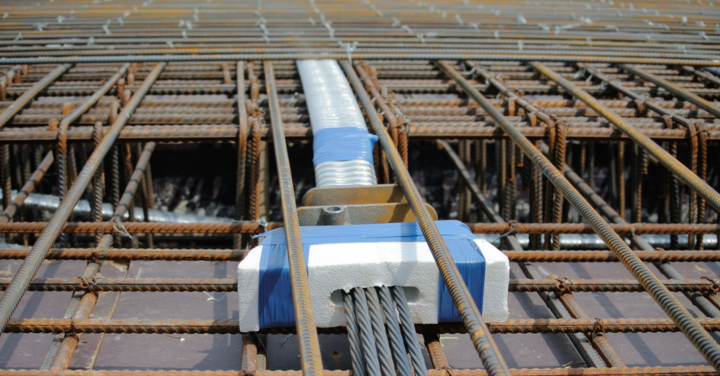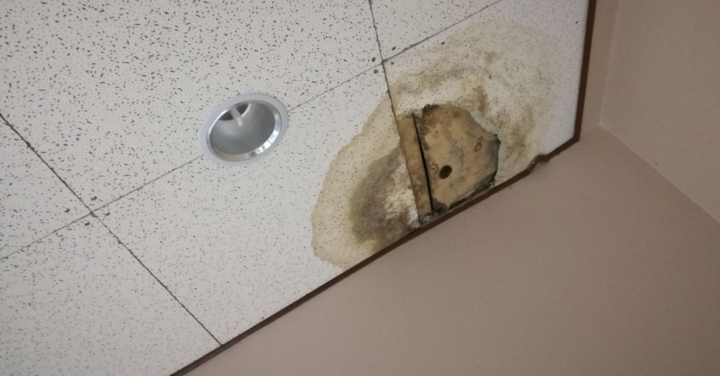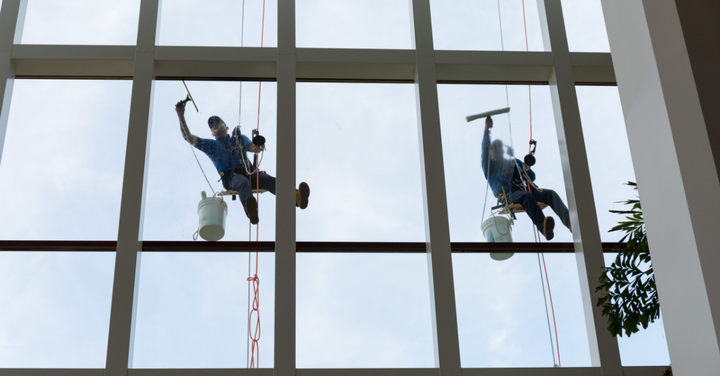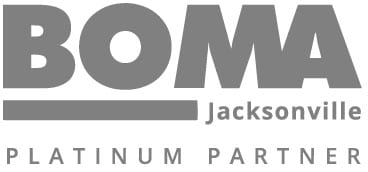Commercial concrete management, including post-tensioning systems, is critical to any residential or commercial high-rise and multi-level parking garage construction project. Post-tensioning involves placing prestressed steel “tendons” tightened once the concrete hardens. The additional stress of tightening compresses the concrete into its strongest state, ensuring it can support the external service loads (weight) once using the structure.
Failing to factor in the load-bearing capability of a structure can lead to catastrophic events, such as the collapse of the Hotel New World in Singapore in 1986. The six-story building collapsed in 60 seconds, resulting in 33 deaths. More recently, investigators are still trying to determine the cause of a partial parking garage collapse in Baltimore in July 2022.
This article looks closer at post-tensioning systems, explaining what they are, how they work, and their benefits to construction and architecture. We’ll also present some practical applications of post-tensioning concrete, criteria to consider when evaluating such systems, and where to turn for post-tensioning repairs.
What is Post-Tensioning?
Post-tensioning is a unique design technique that reinforces concrete in commercial building construction. This process helps strengthen concrete, allowing it to hold up better post-construction, keeping structures secure and stable. Post-tensioning tendons generally consist of stainless steel and reinforced cable bundles. These run inside plastic coatings or sleeves, placed inside the casings where concrete is poured before filling. Afterward, the cables are tensioned and anchored against the other concrete edges.
The post-tension acts much the same as support beams and improves the safety and stability of concrete pillars, foundations, columns, and other structures. Post-tensioning concrete is critical in the commercial building process, and proper execution gains maximum benefits.
How Does Post-Tensioning Work?
Post-tensioning works within commercial building structures as a form of prestressing. Steel is stressed and put under tension before the concrete has hardened to support the service loads and stress of the building. Most precast, prestressed concrete has this process done as well. Post-tensioned concrete means that the concrete gets poured, and then tension is applied—but there is stress before applying the loads, leaving it prestressed. It is a way of preparing the structure to support the loads and stress of large commercial systems adequately.
Reasons concrete is popular in commercial buildings and commonly seen in post-tensioning construction include:
- High durability and resiliency over long periods.
- Relatively low maintenance and upkeeps are required.
- Affordable and easy maintenance and repairs.
- Affordable for mass projects and large-scale production.
- The versatility of applications allows greater design creativity.
- Easy to source locally for more affordable rates.
- It can be used in all climates and temperature extremes.
- Highly resistant to rust and corrosion.
- It is fire resistant and doesn’t burn easily.
- Fewer issues with pests, mold, and other issues.
With so much in favor of concrete construction, the ability to improve the features of stability, durability, and longevity with post-tensioning only adds to the appeal of concrete usage in commercial structures.
Why Post Tensioning & What are the Benefits?
Concrete is the most popular construction material in the world, and for a good reason. It’s widespread in commercial buildings, not only for basements and foundations but also for exterior walls. And, of course, it’s used frequently for sidewalks, ramps, and parking garages. The concrete used in commercial buildings is often subject to more significant pressures and stressors than concrete for residential use. When used in massive commercial building projects, this requires additional support and design considerations.
Concrete may be among the most common construction materials, but it can still come with a high price tag. Industry estimates show that a concrete parking garage could range between $4 and $7 per square foot. This price typically includes the cost of materials and labor. A smaller structure may run $5,000 to $14,000, whereas a larger building could be as much as $174,000-$490,000. Larger commercial structures, whether office buildings or parking garages, require more structural performance, which may change how you need to utilize concrete. This is where post-tensioning makes its impact.
Considering all these features and benefits, one critical aspect of commercial concrete management and upkeep regarding degradation makes all the difference post-tensioning.
Post-tensioned concrete has a variety of benefits, including:
- Allowing concrete to be used in higher and longer spans to create larger spaces
- Providing increased strength and support for load-bearing areas of construction
- Compensates for poor site conditions and improves structural stability
- Installs and hardens faster than other conventionally reinforced concrete structures
- It uses much less concrete, saving money and resources
- Provides flexibility and options for primary formwork and final aesthetic touches
- Increases the overall safety and durability of the structure
- Provides a faster and more practical manufacturing option
- Safe to use in nearly every building situation
- Reliable structure strength with post-tensioning
- Easily scalable for use in small, medium, and large commercial buildings
Finding the balance between affordable concrete usage and durable post-tension elements remains crucial in planning and maintaining commercial structures.
What Exactly is a Post-Tensioning System?
The post-tensioning concrete method was first developed in the early 1950s by industry specialists such as VSL in Switzerland. Post-tensioning is often a solution for addressing design and engineering issues. It enables the operational definition of the internal load path in concrete structures by superposing a favorable state for the internal stresses. This stress reduction minimizes deformations, reduces the thickness of concrete segments, reduces reinforcement congestion, joins components without relying on wet joints, and allows high-strength steel to reinforce structural components further.
The post-tensioning system is a structural support mechanism essential to many commercial concrete structures built today. Experts who specialize in concrete repair and upkeep utilize this system for three main reasons:
- Structure Strength with Post-tensioning
Post-tensioning lightens the structure’s weight, reduces load-bearing packages, and helps improve the overall aesthetic appearance.
- Wide Application and Usage Area
It can be used in a wide variety of structures and often occurs in a wide range of systems that vary in size and usage.
- Professional Touch and Service
Post-tensioned construction offers the most suitable solution for combining production and application to create a final uniform structure.
Common Applications for Post-Tensioning
This act of prestressing has several advantages over standard rebars:
- Significantly removes the risk of shrinkage cracks, so fewer joints are required. Shrinkage cracks occur naturally in poured concrete during the curing process as the concrete loses its moisture.
- Cracks that do occur are held tightly together and do not grow and spread.
- It allows structural concrete pieces to be thinner and lighter than they would normally.
- Engineers and designers can build slabs over expansive areas or on softer soils.
- Post-tensioning supports longer spans in elevated areas like floors, beans, and ceilings.
Criteria of a Post-Tensioning System to Evaluate
Building designers looking for a post-tensioning system should first consider three factors to avoid costly damages and repairs down the road.
Type of structural element – the depth of the structural component plays a key role:
- Use of slab tendons with flat designs for thin structural elements such as floor flaps and ceilings.
- Multi-strand tendons can be used for any other application and are common in thicker heavy construction areas.
Structural design – taking into account specific structural design requirements:
- Post-tensioning can be introduced and might utilize internal or external tendons or, in some cases, a combination.
- Concrete slab post-tensioning tendons are bonded or unbonded based on the location, application, and desired results.
Protection against corrosion – Protection needed to safeguard cables against corrosion:
- The tendon encapsulation depends on the required protection level (PL) – PL1, PL2, PL3, typically subject to location and environmental exposures.
- Corrosion protection is the application of anti-corrosion chemicals to prevent damage to equipment or facilities caused by corrosive processes.
Get Quality Building Repair and Management Services From Industry Experts Familiar With Post-Tensioning Systems
Finding the balance between affordable yet durable materials is vital in planning and maintaining commercial structures. Post-tensioning concrete systems allow the utilization of the durable and versatile nature of concrete, while the addition of steel cables and tension support add required structural stability.
The post-tensioning system is the structural support working behind the scenes to provide long-lasting strength, durability, safety, and protection. Professional building management services are integral in maintaining post-tensioning systems to guard against building collapses.
Make sure your team is ready to deal with the maintenance and upkeep of post-tensions systems. Contact A1orange Group today and work with industry experts who can keep your building in good working order.








